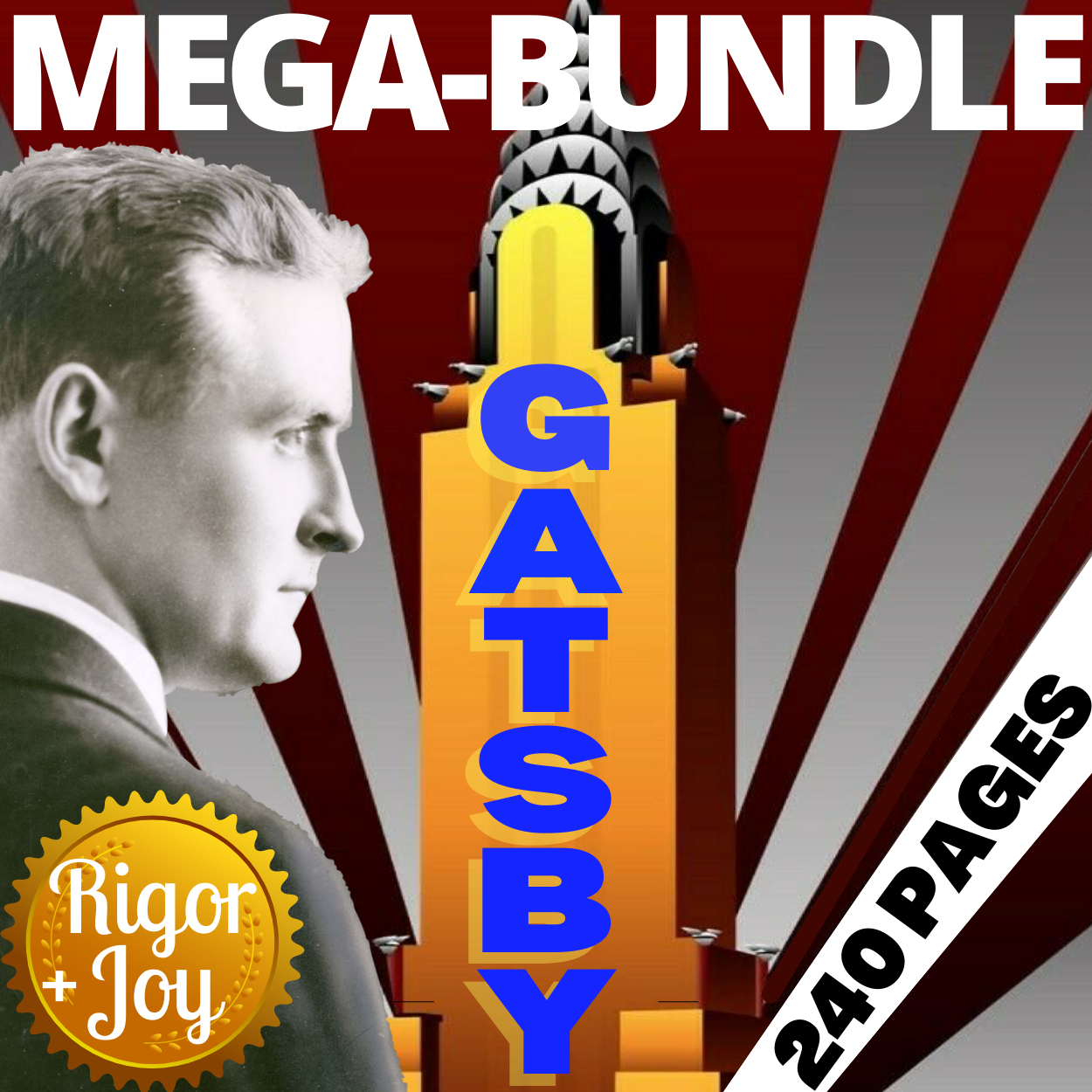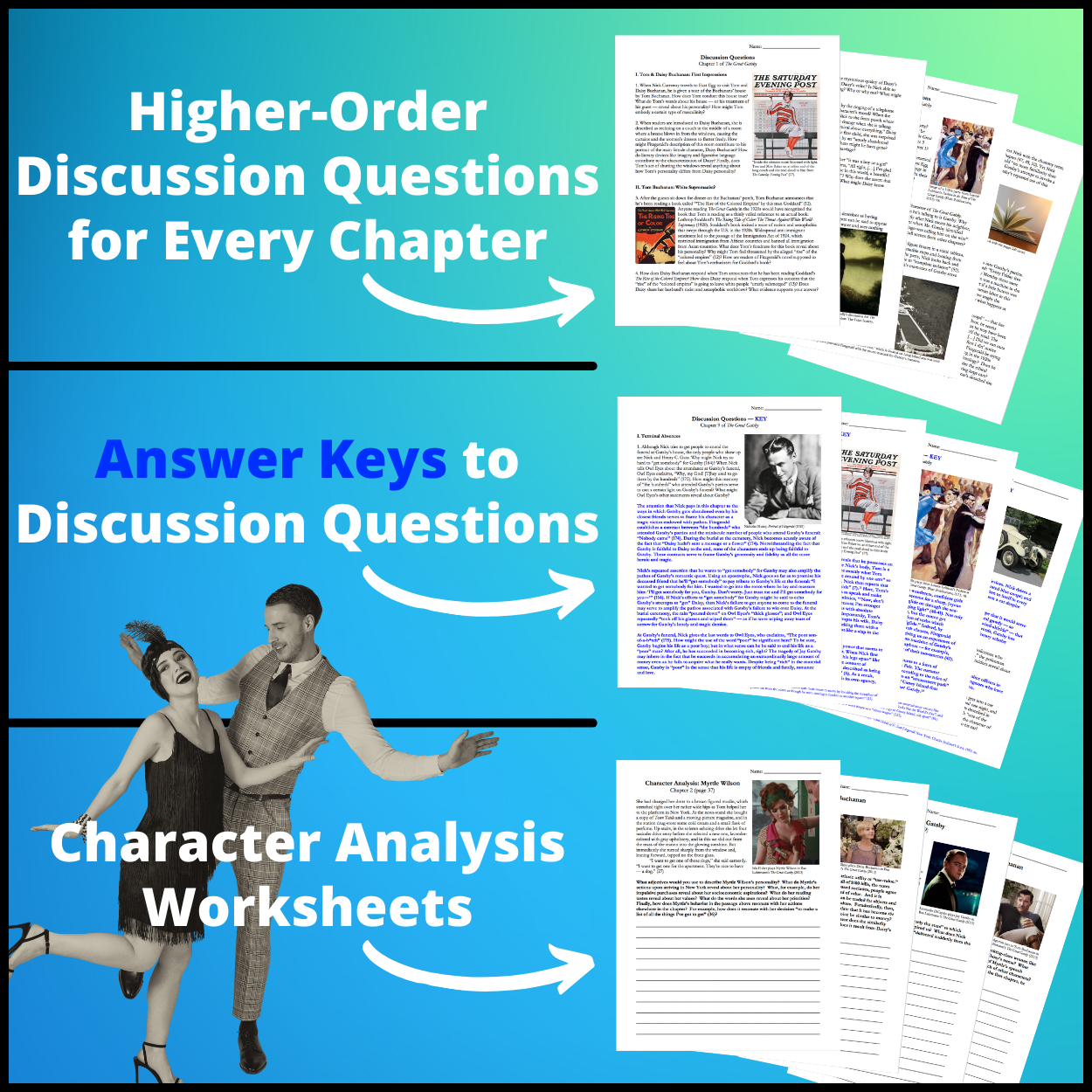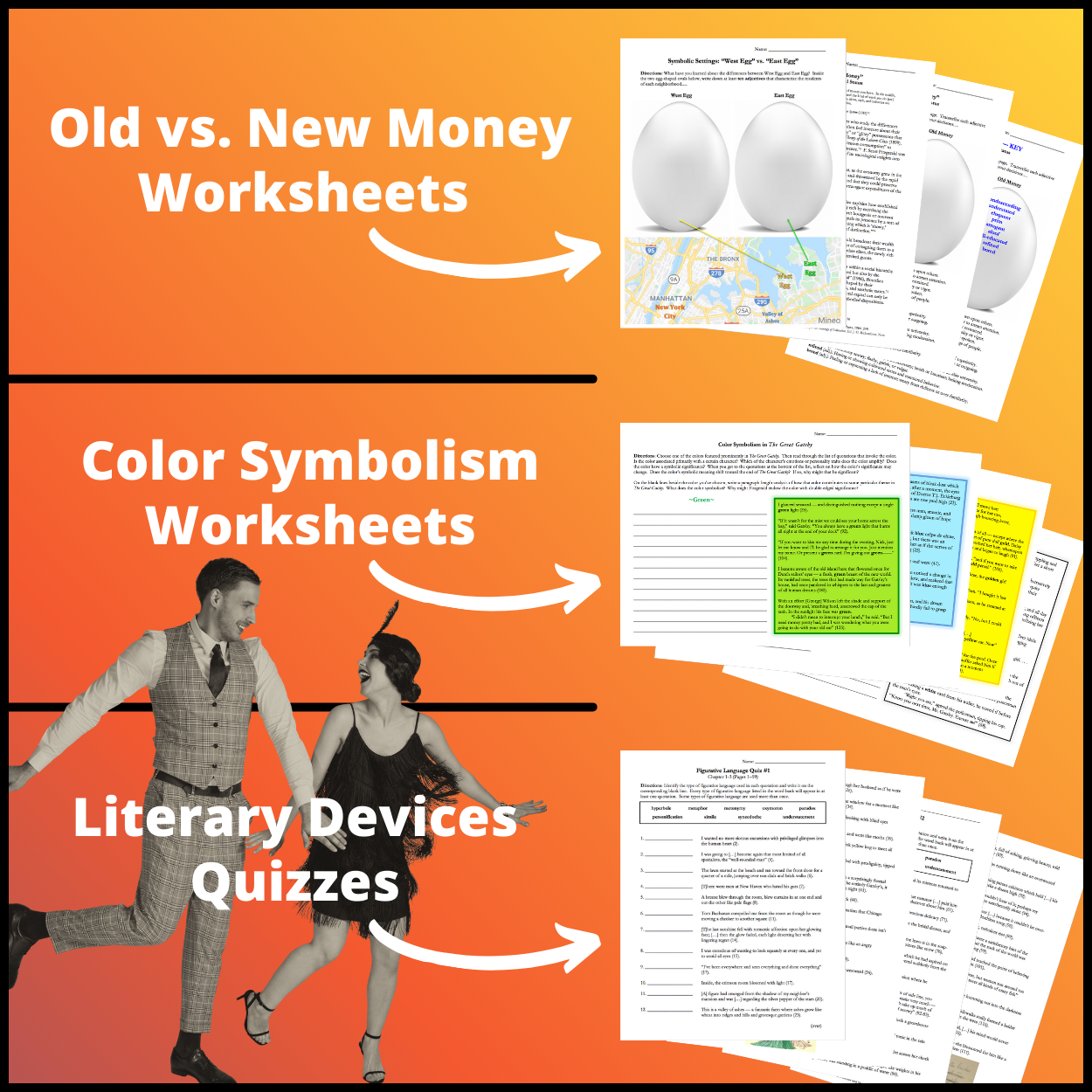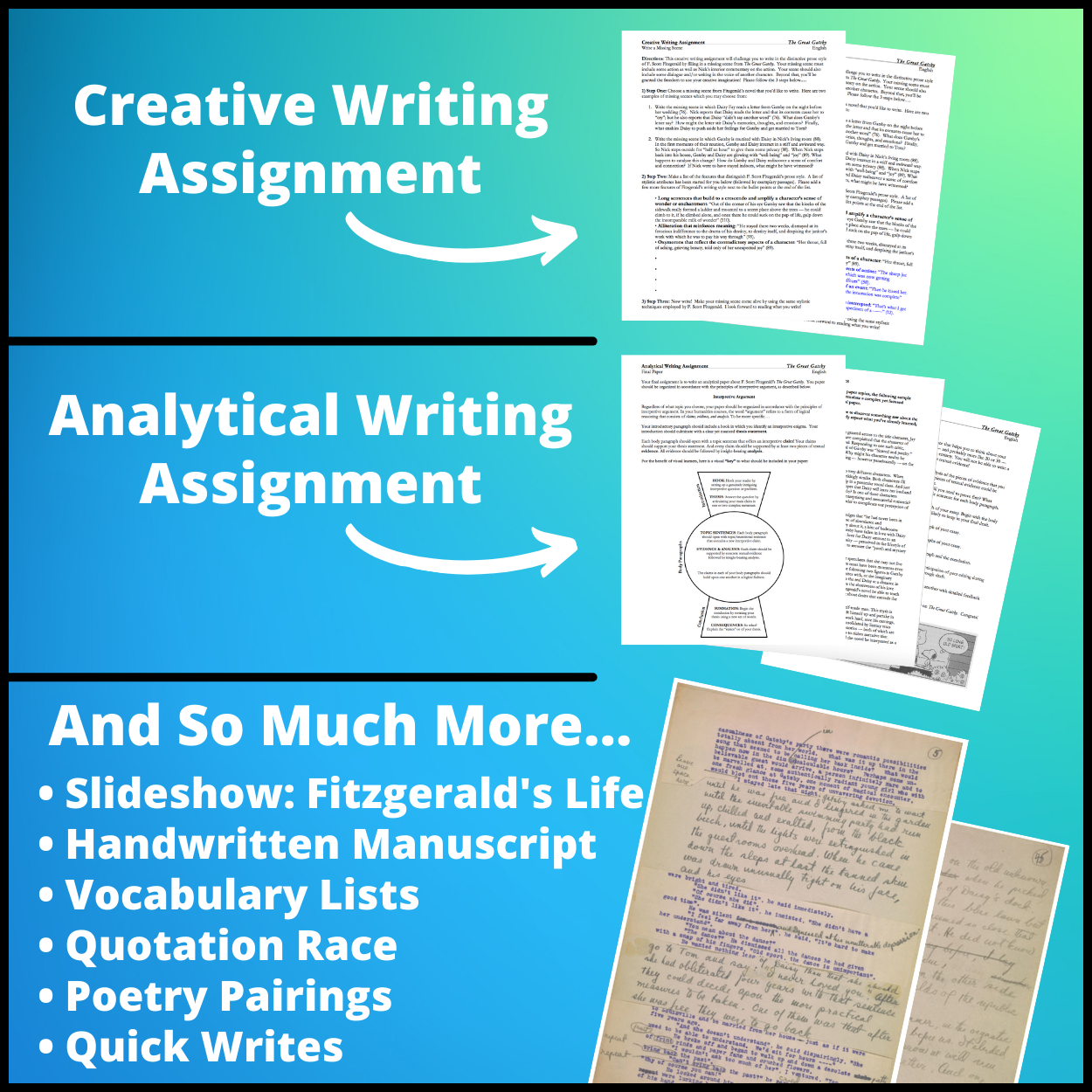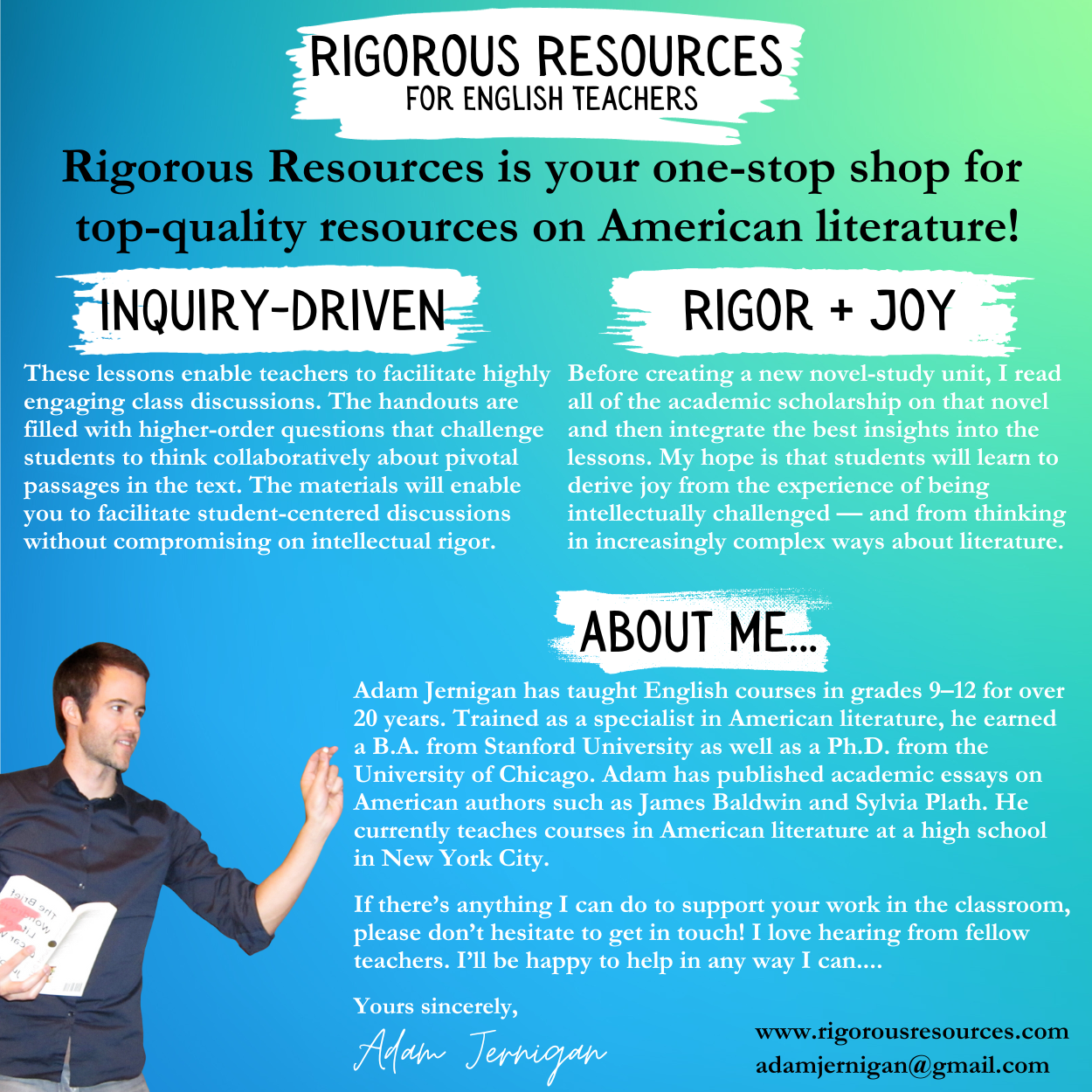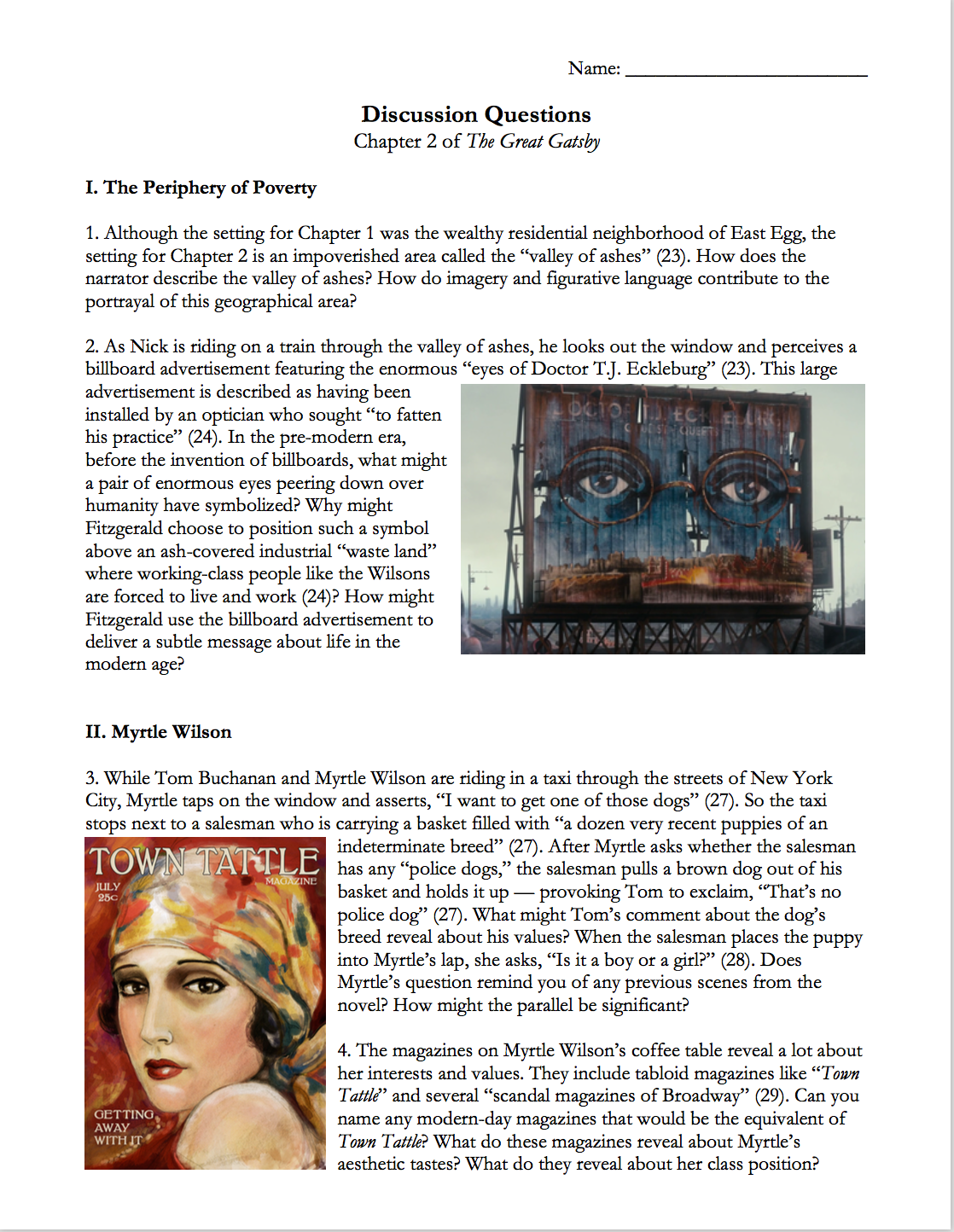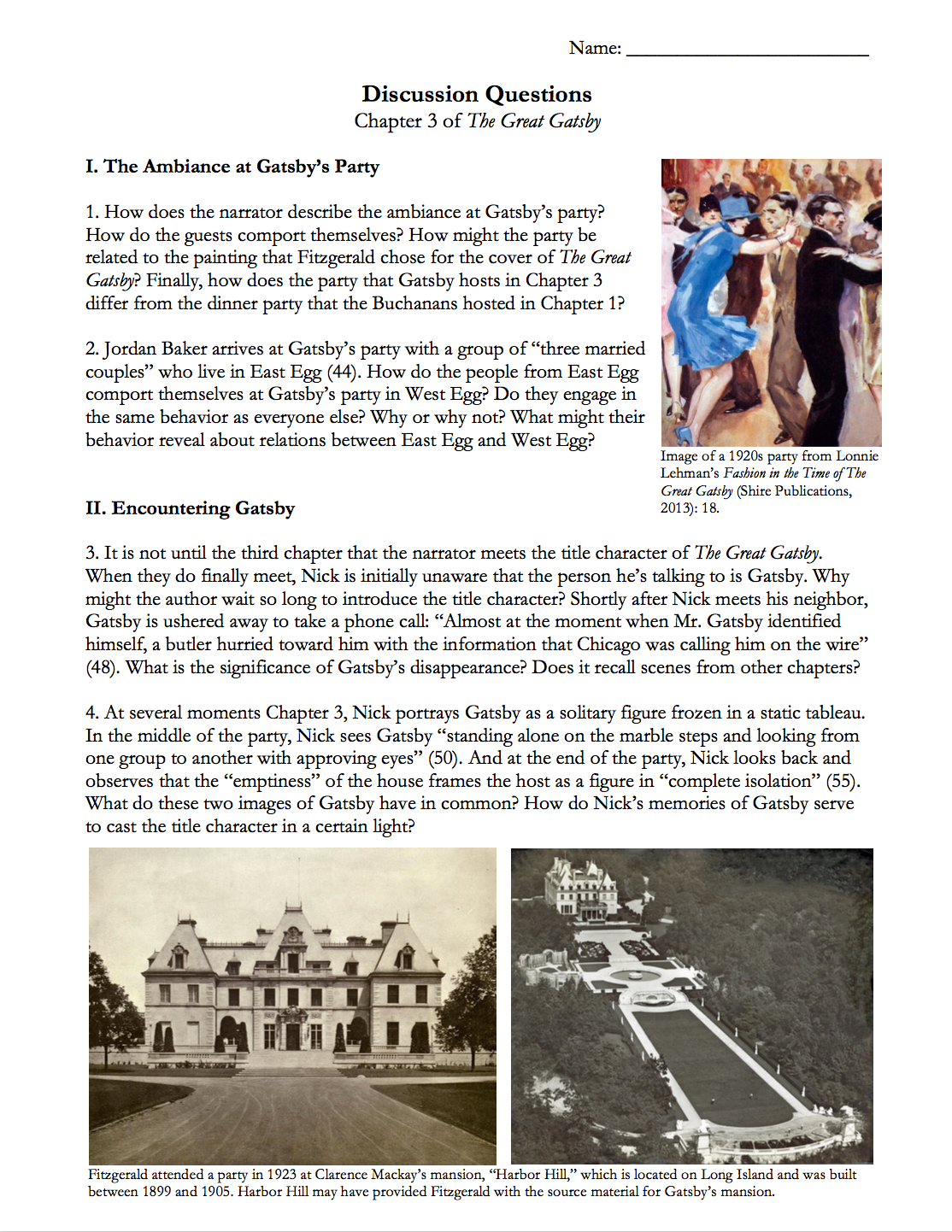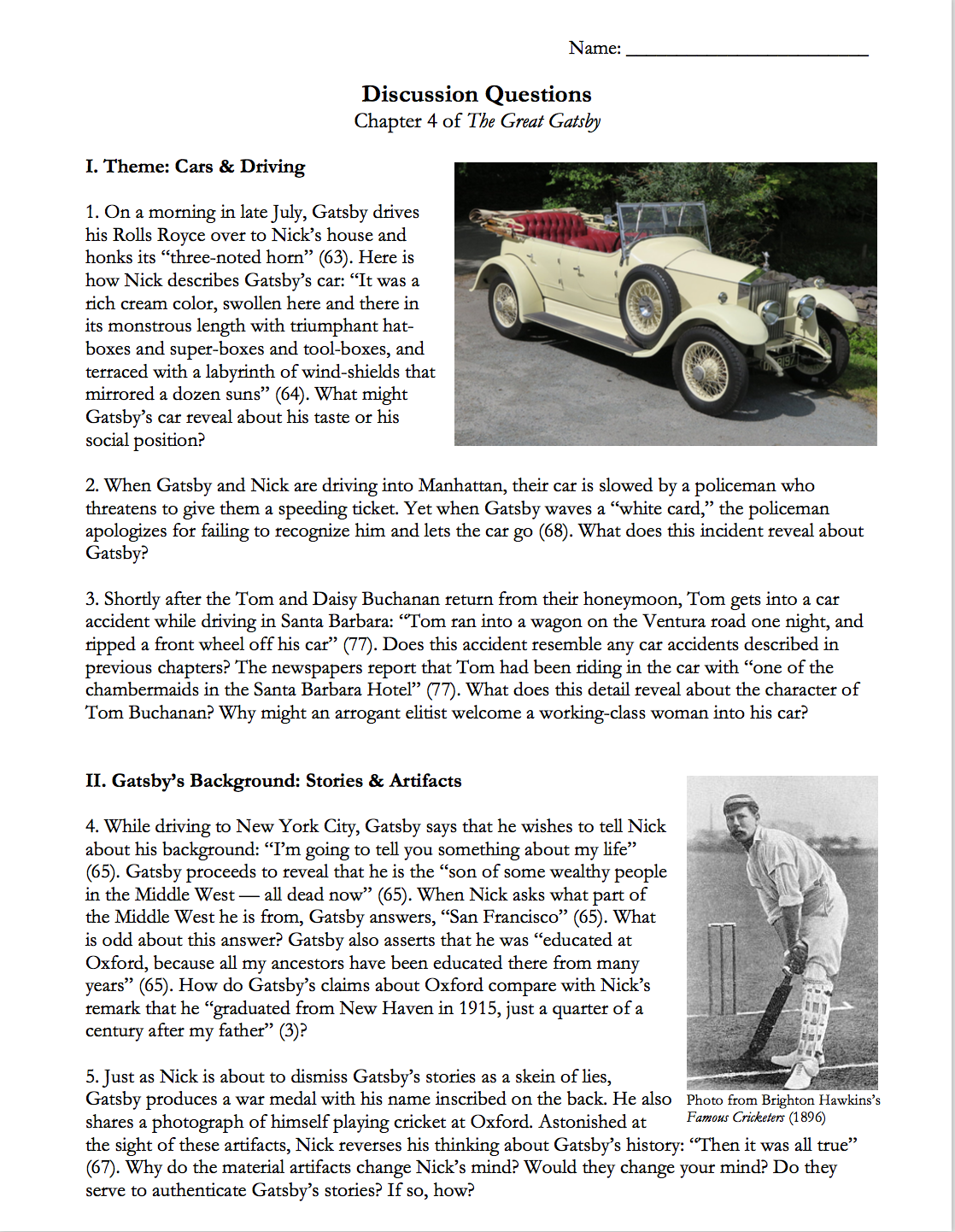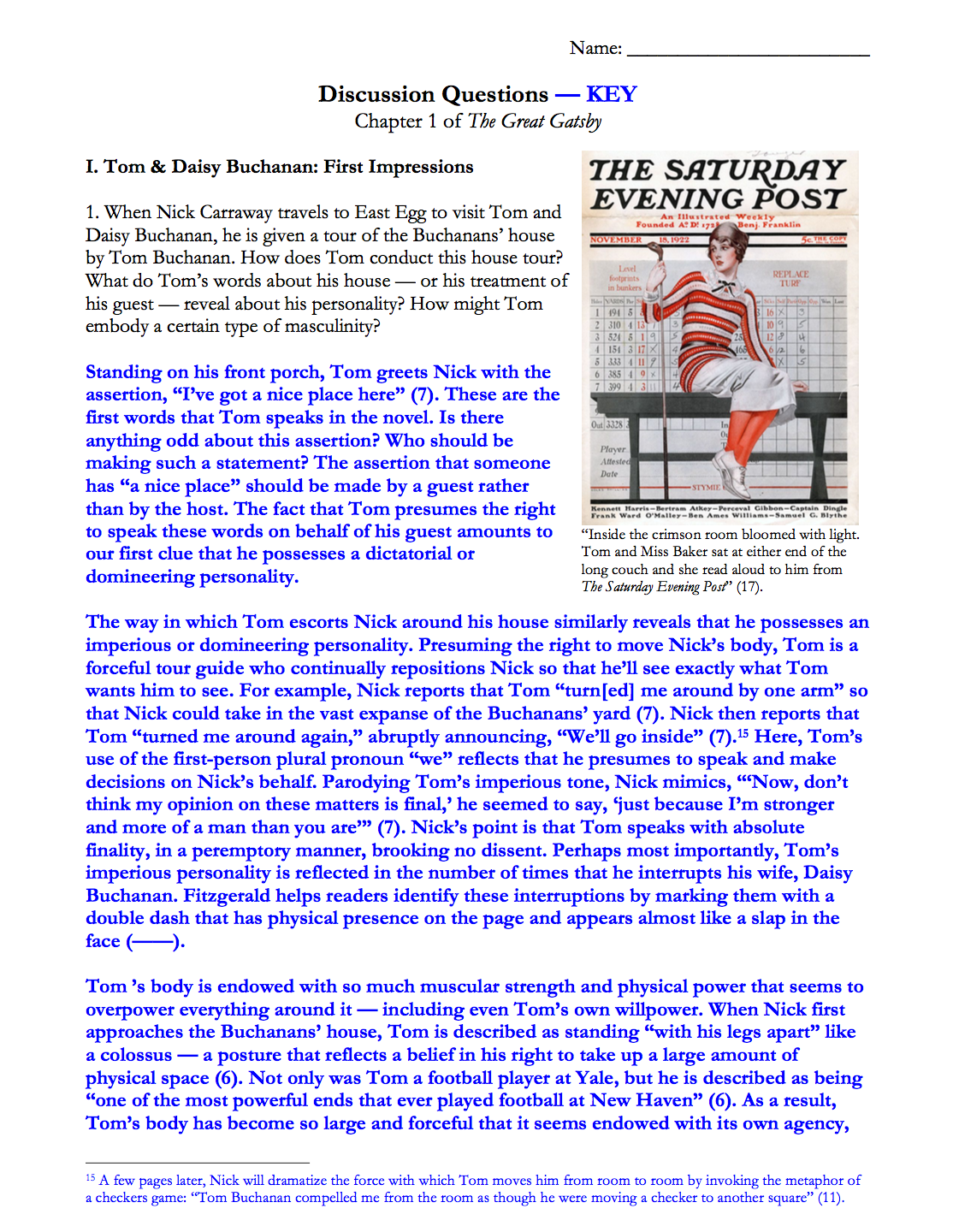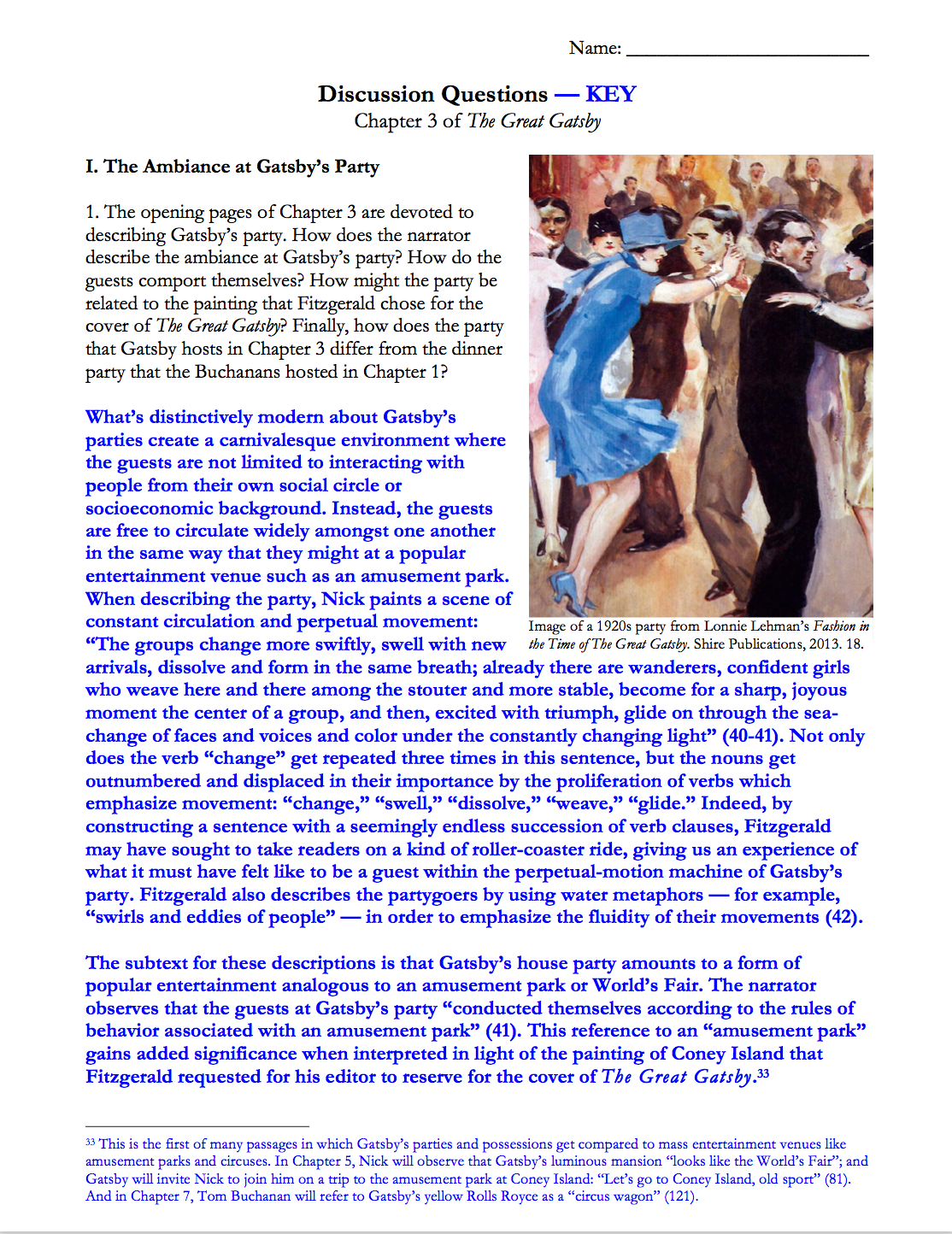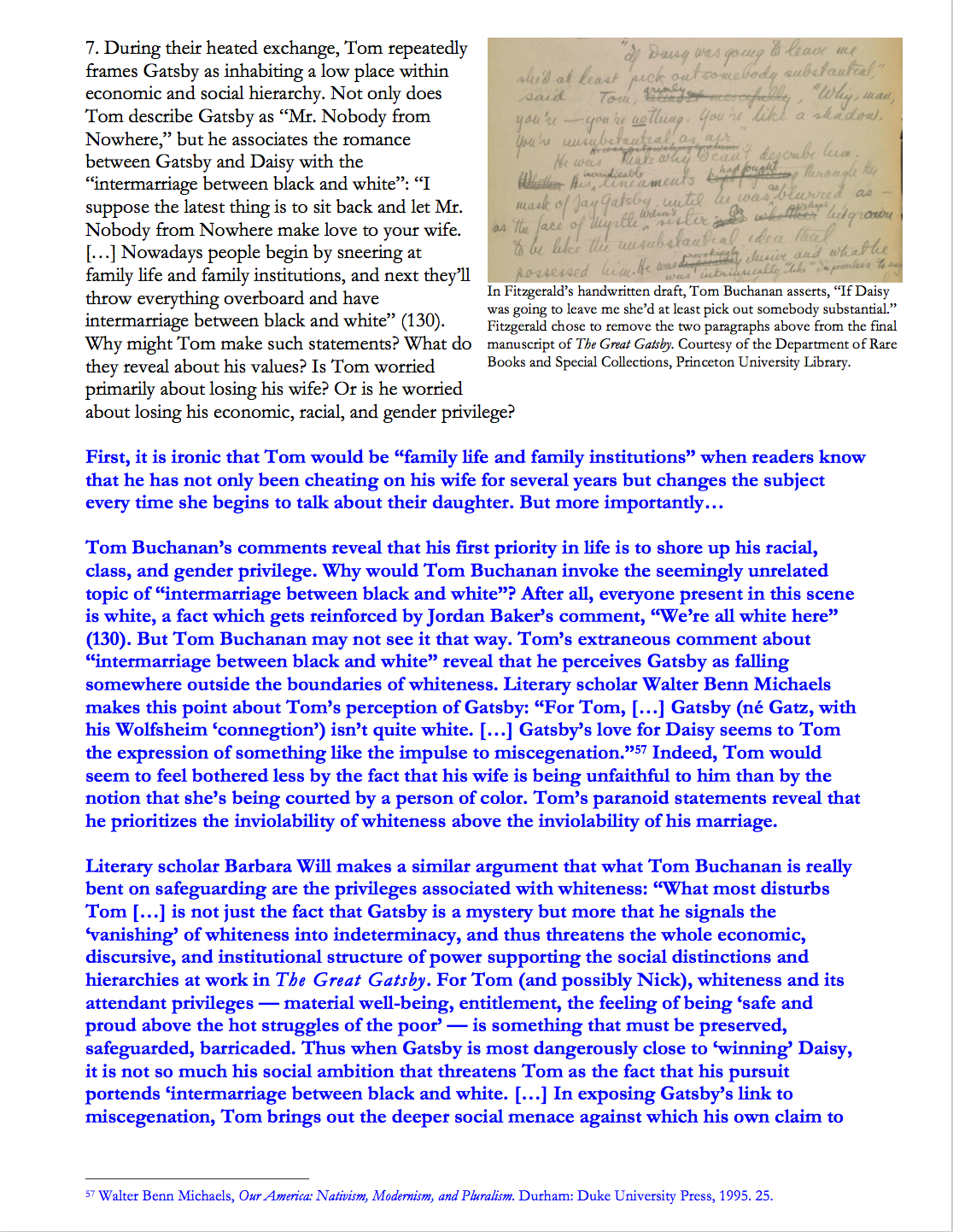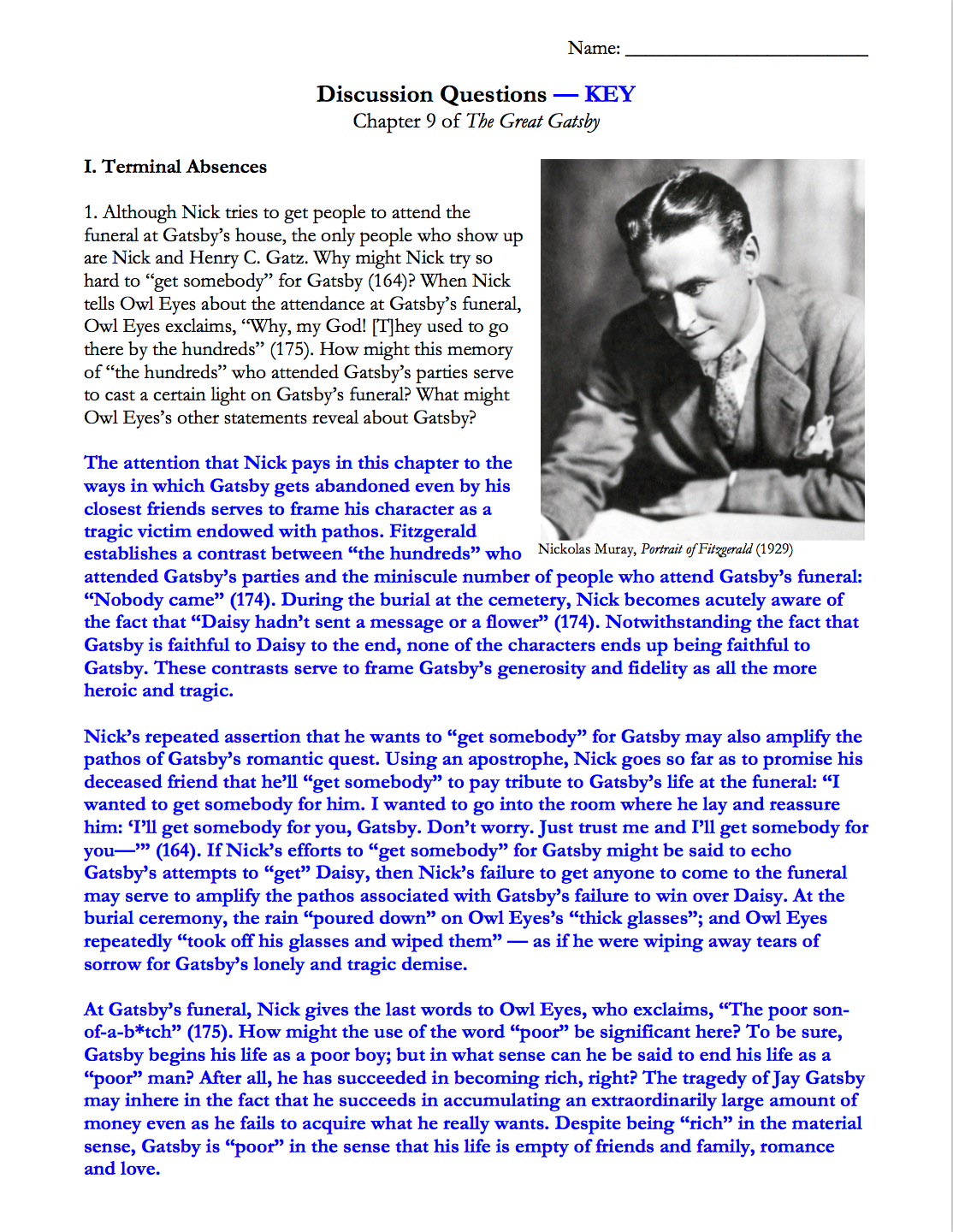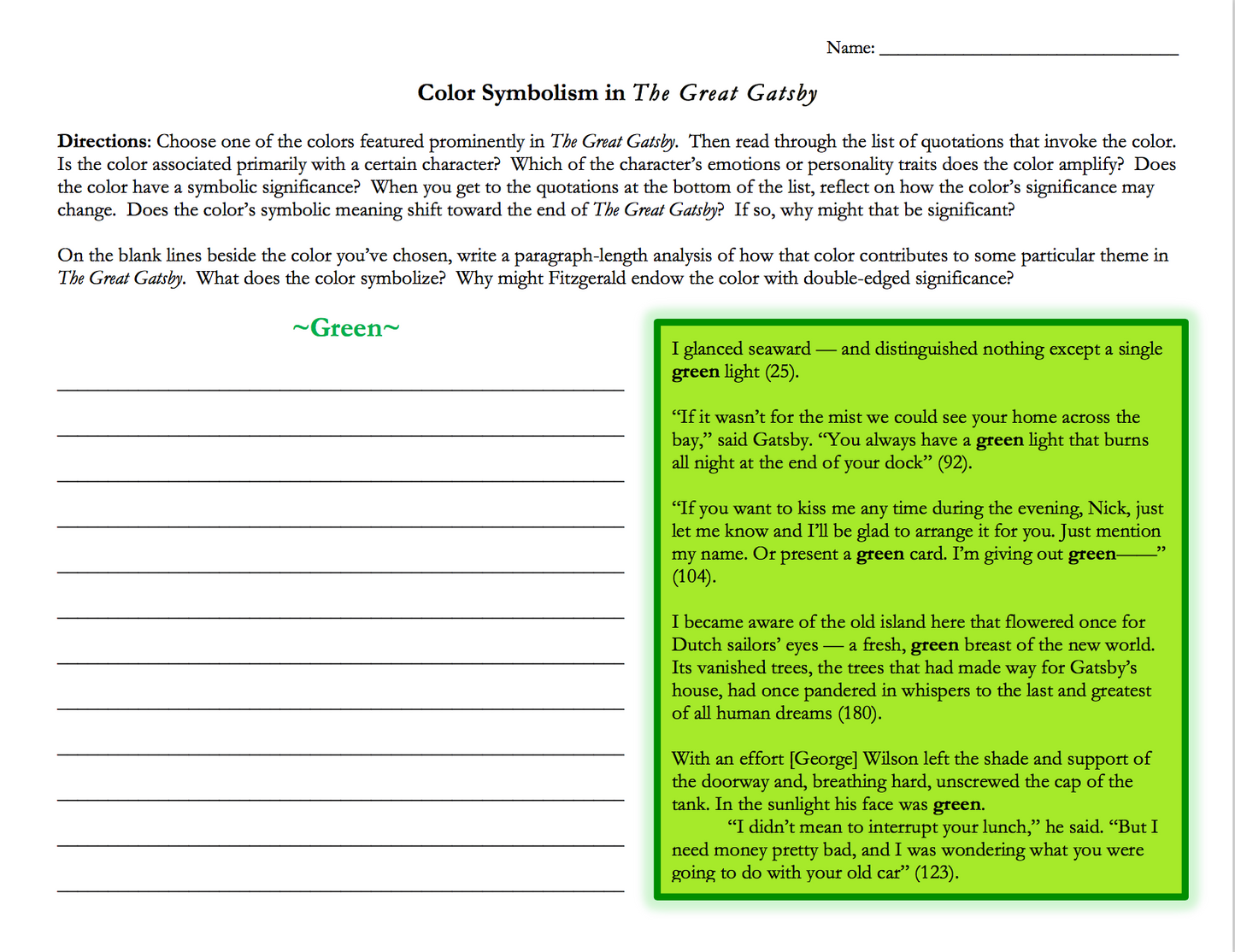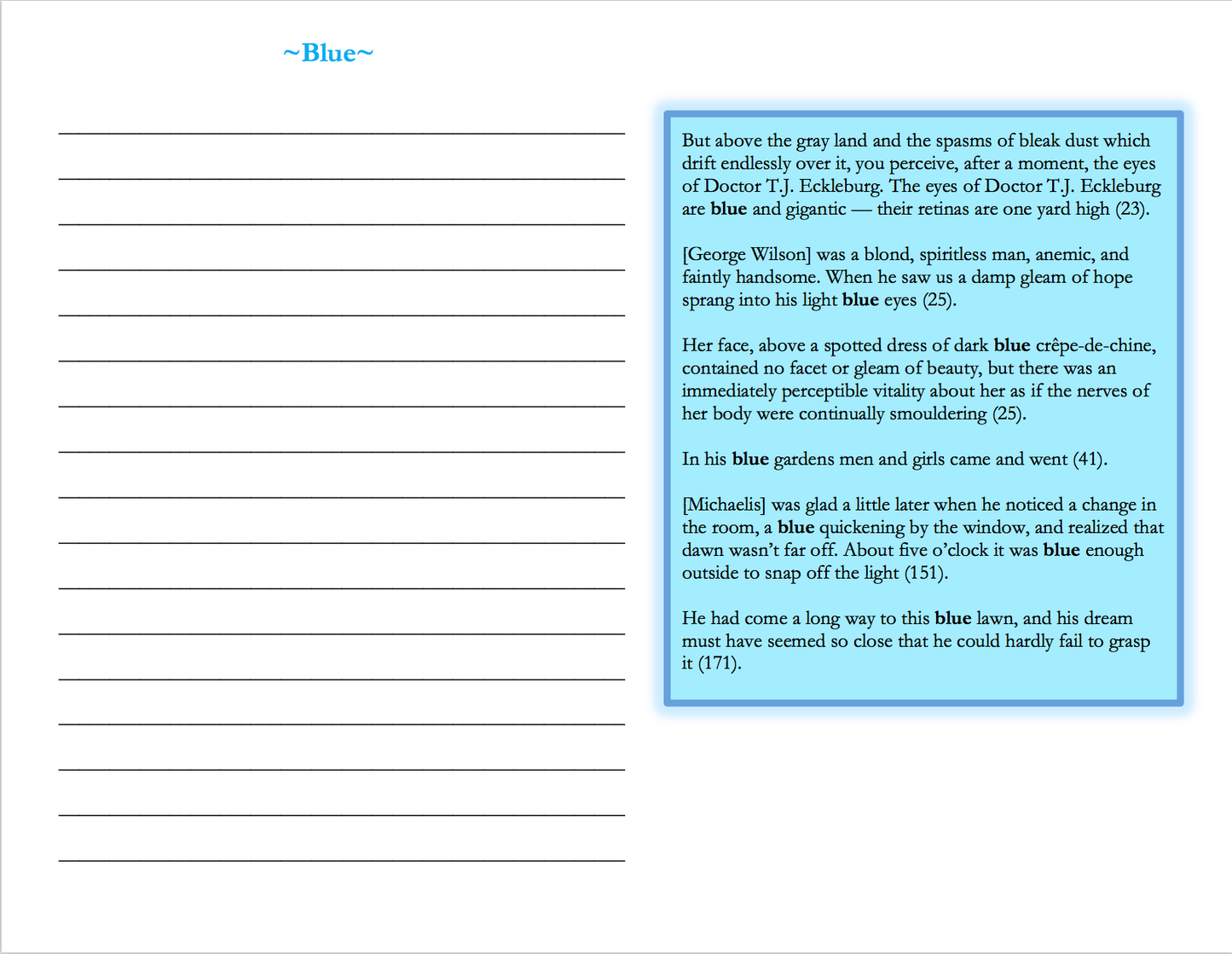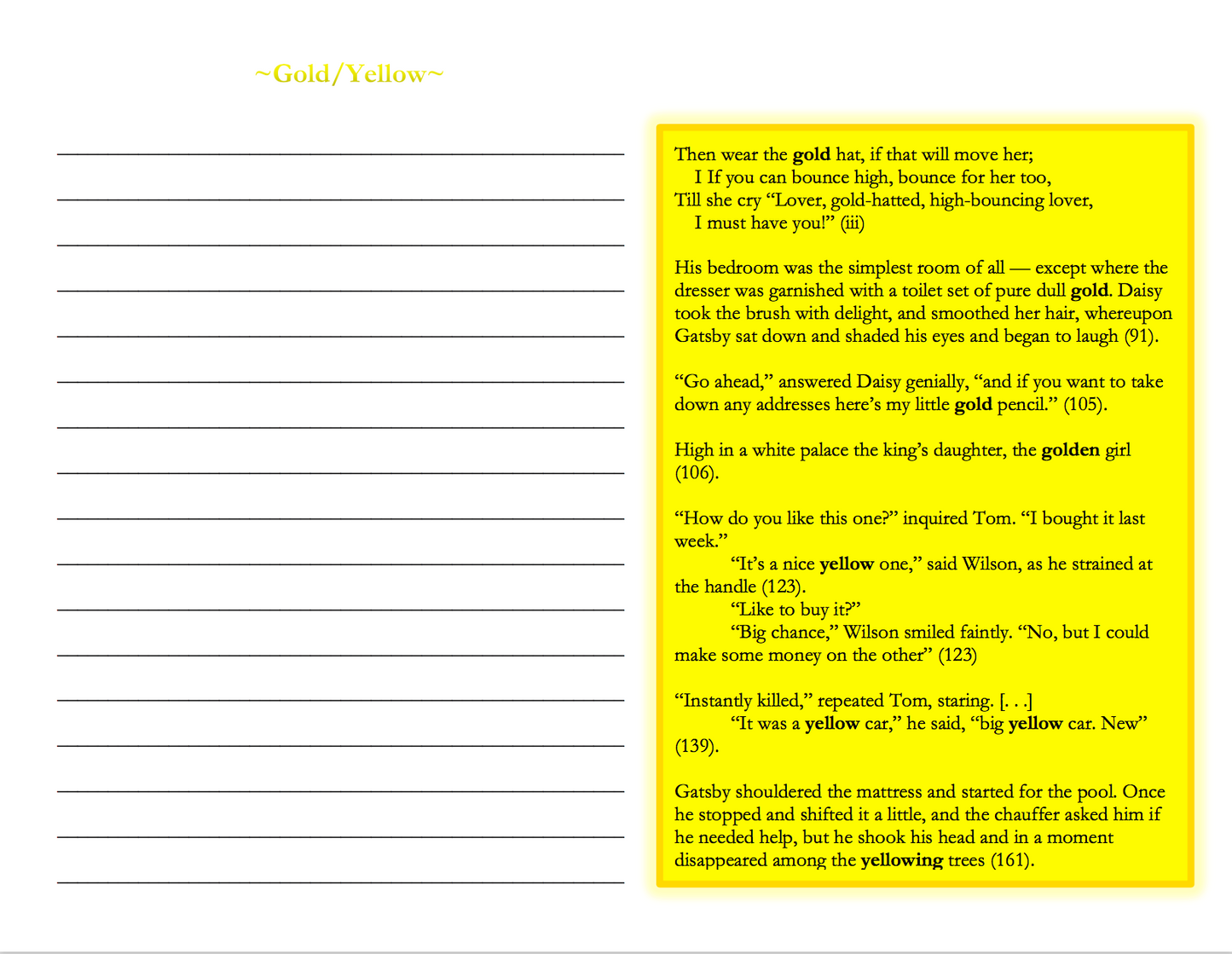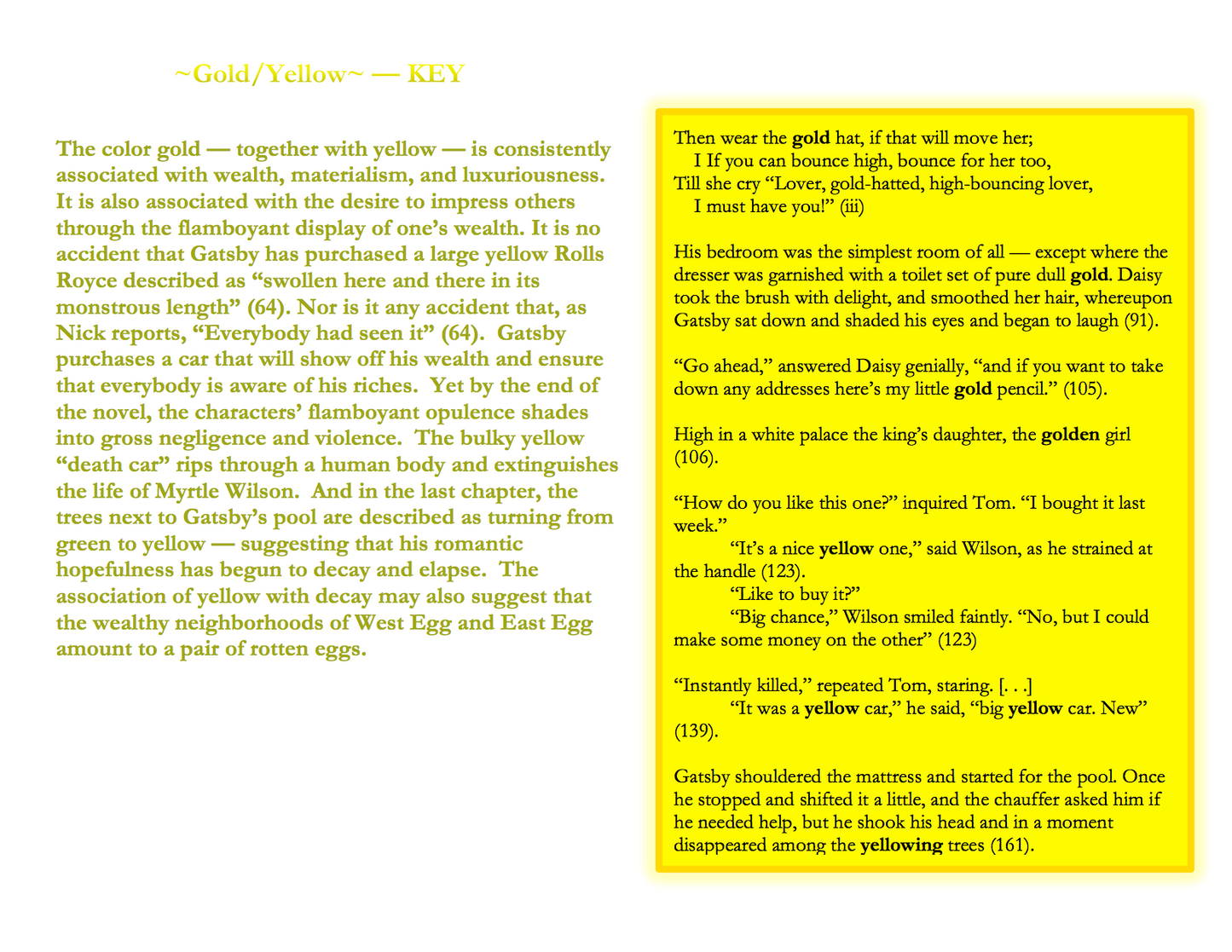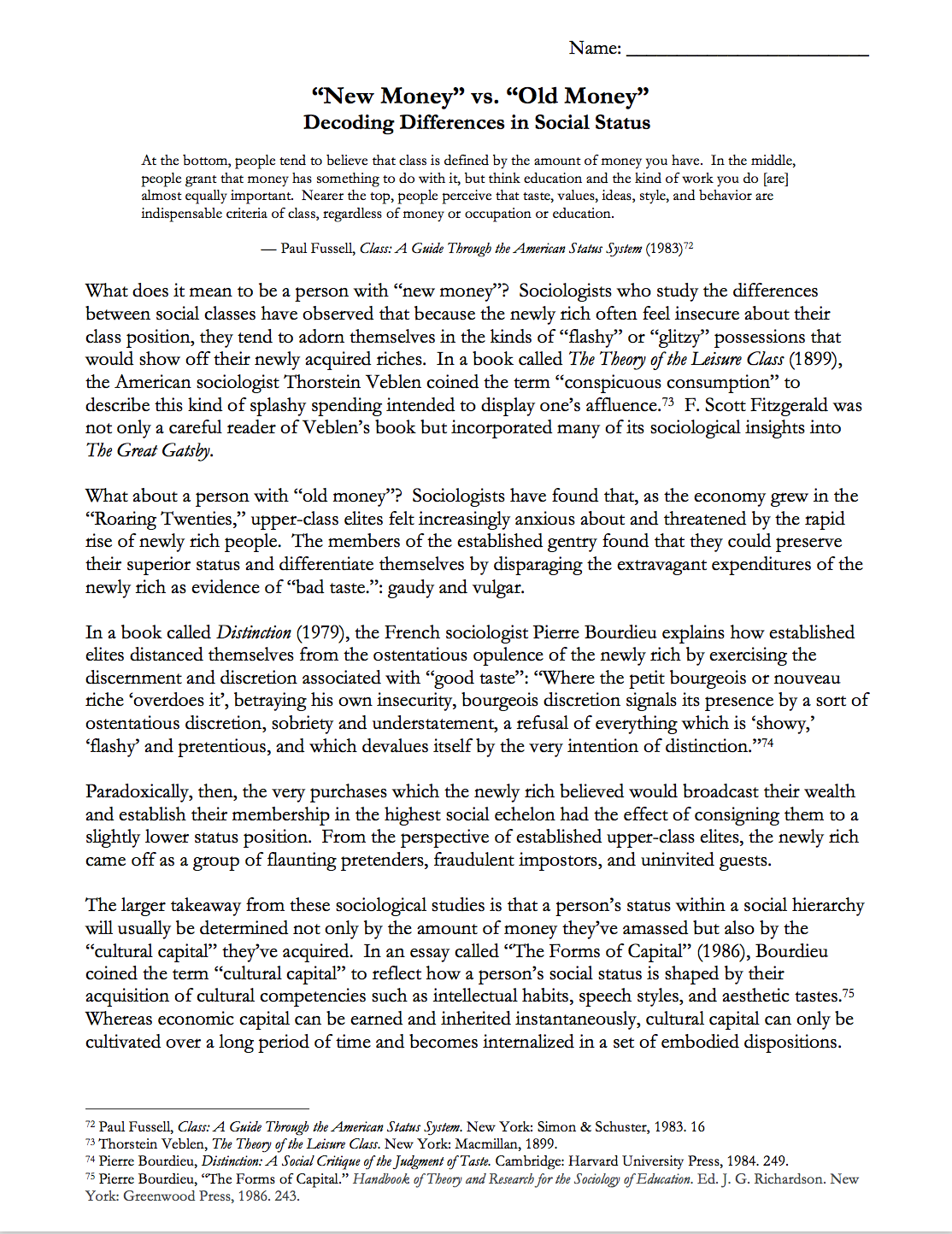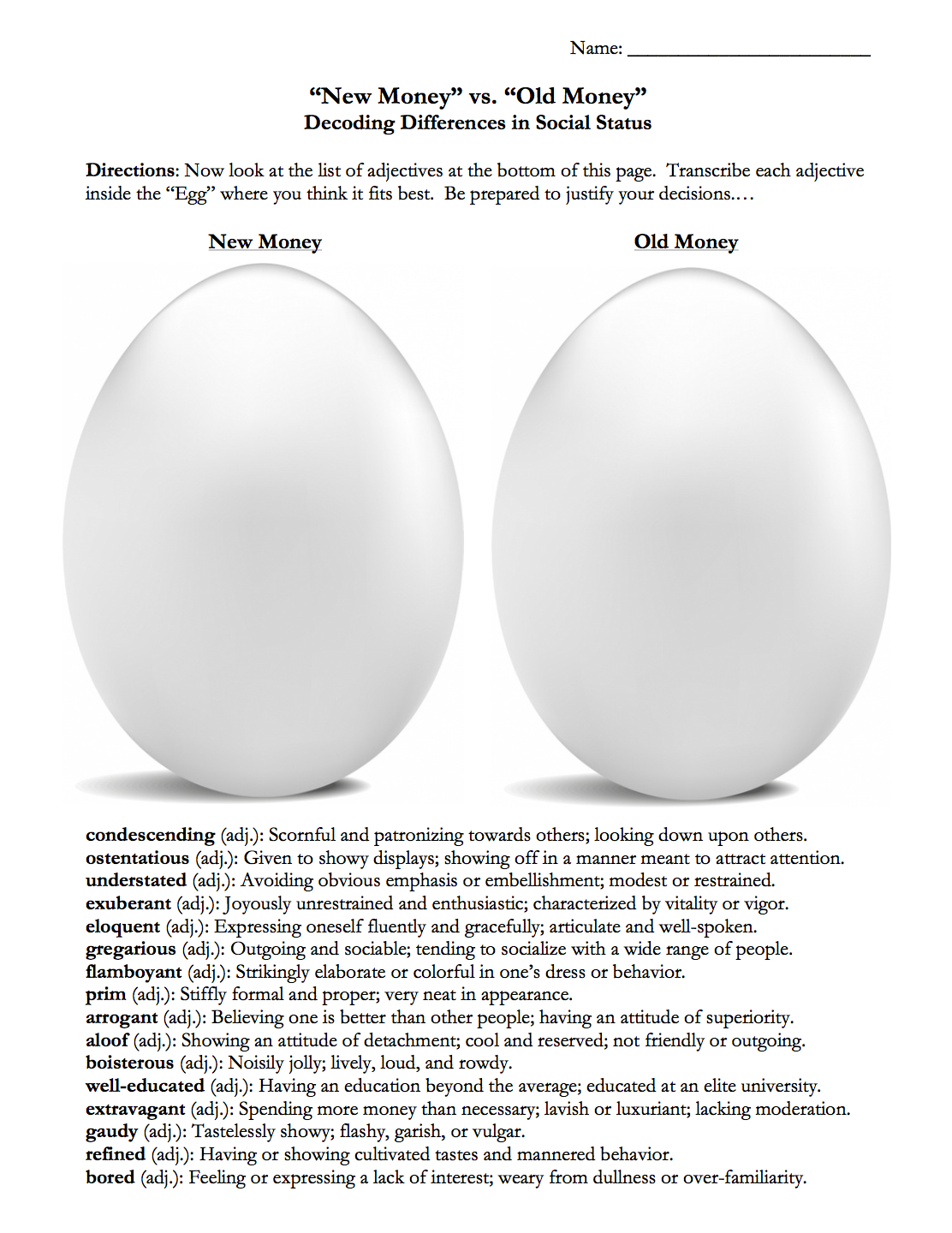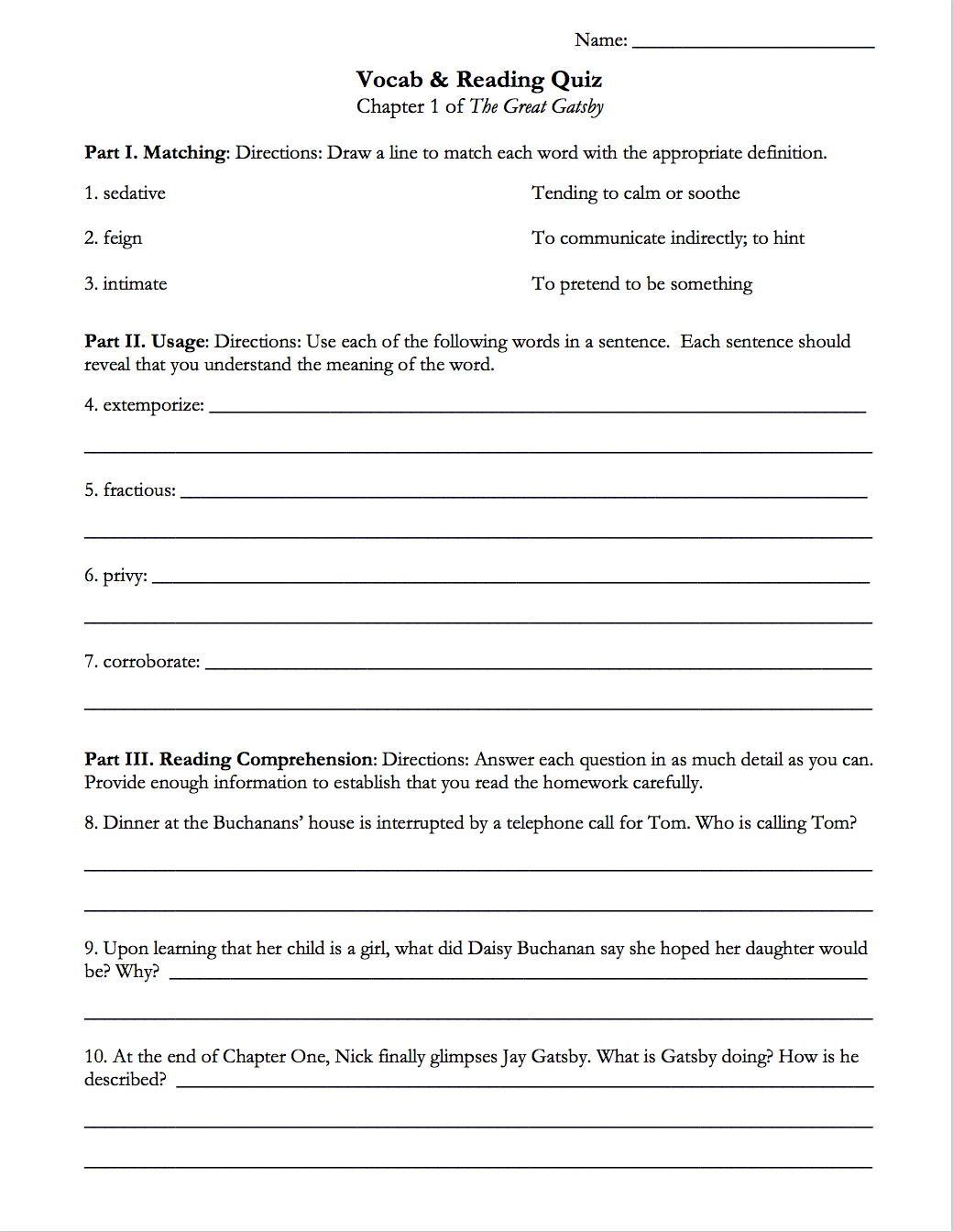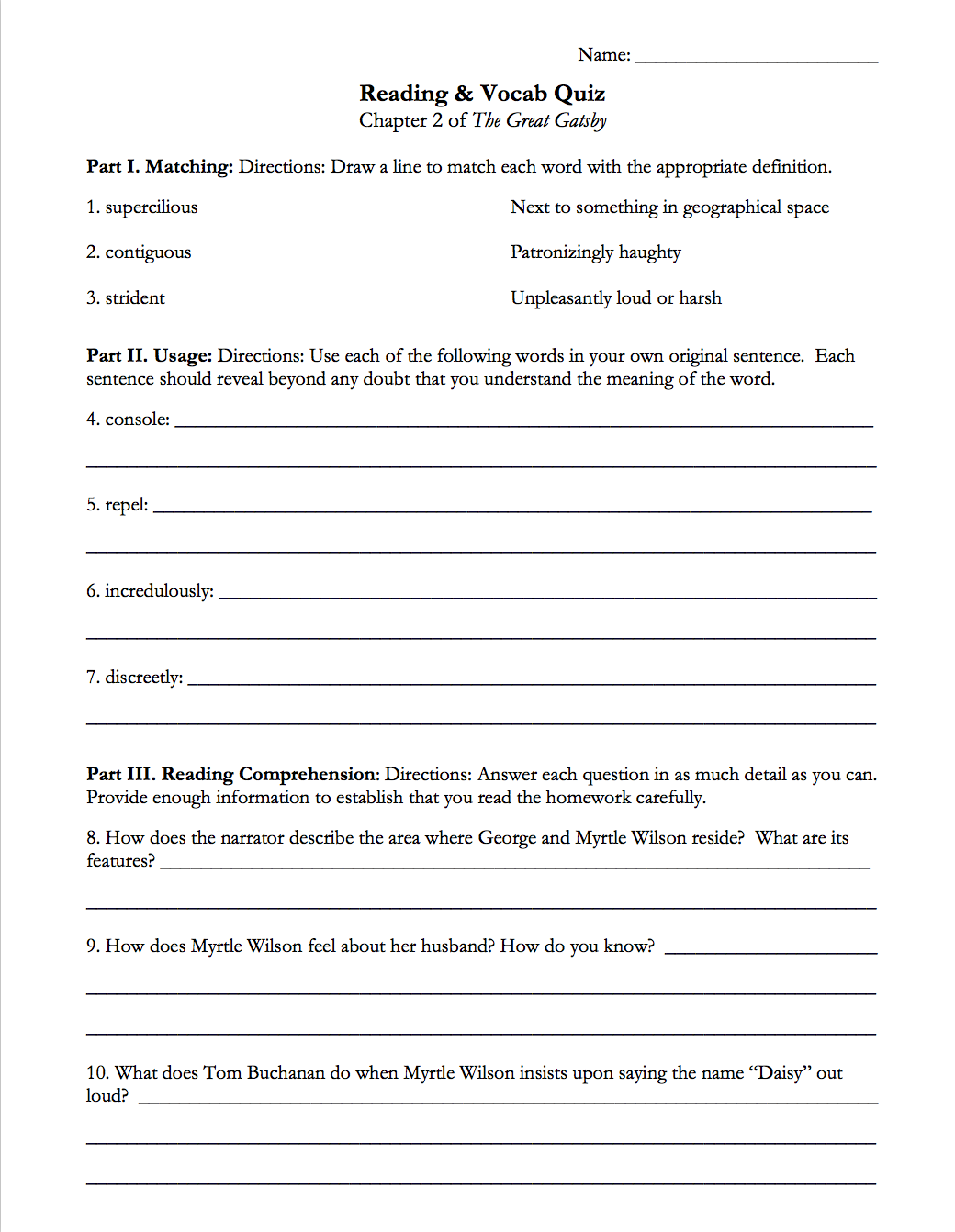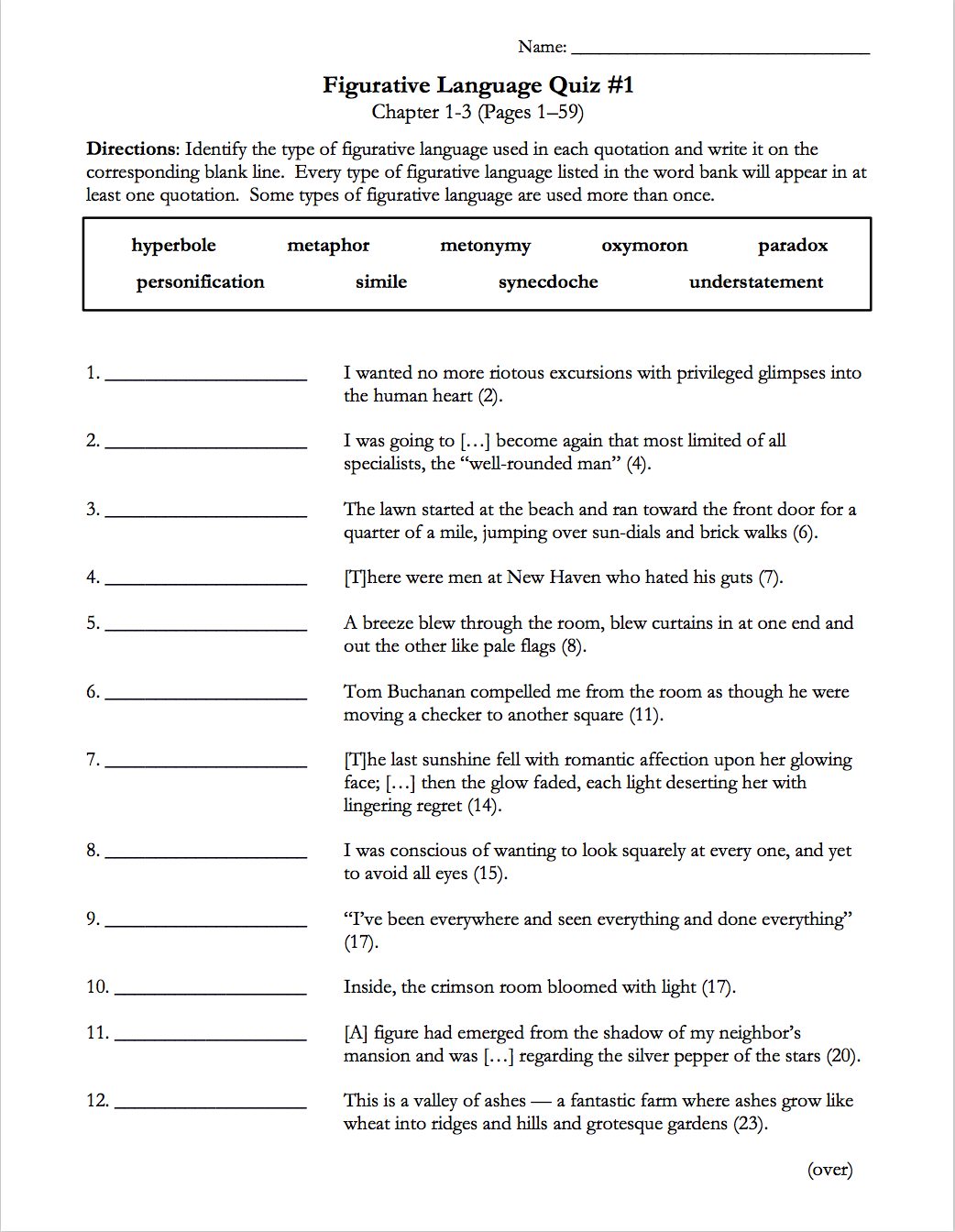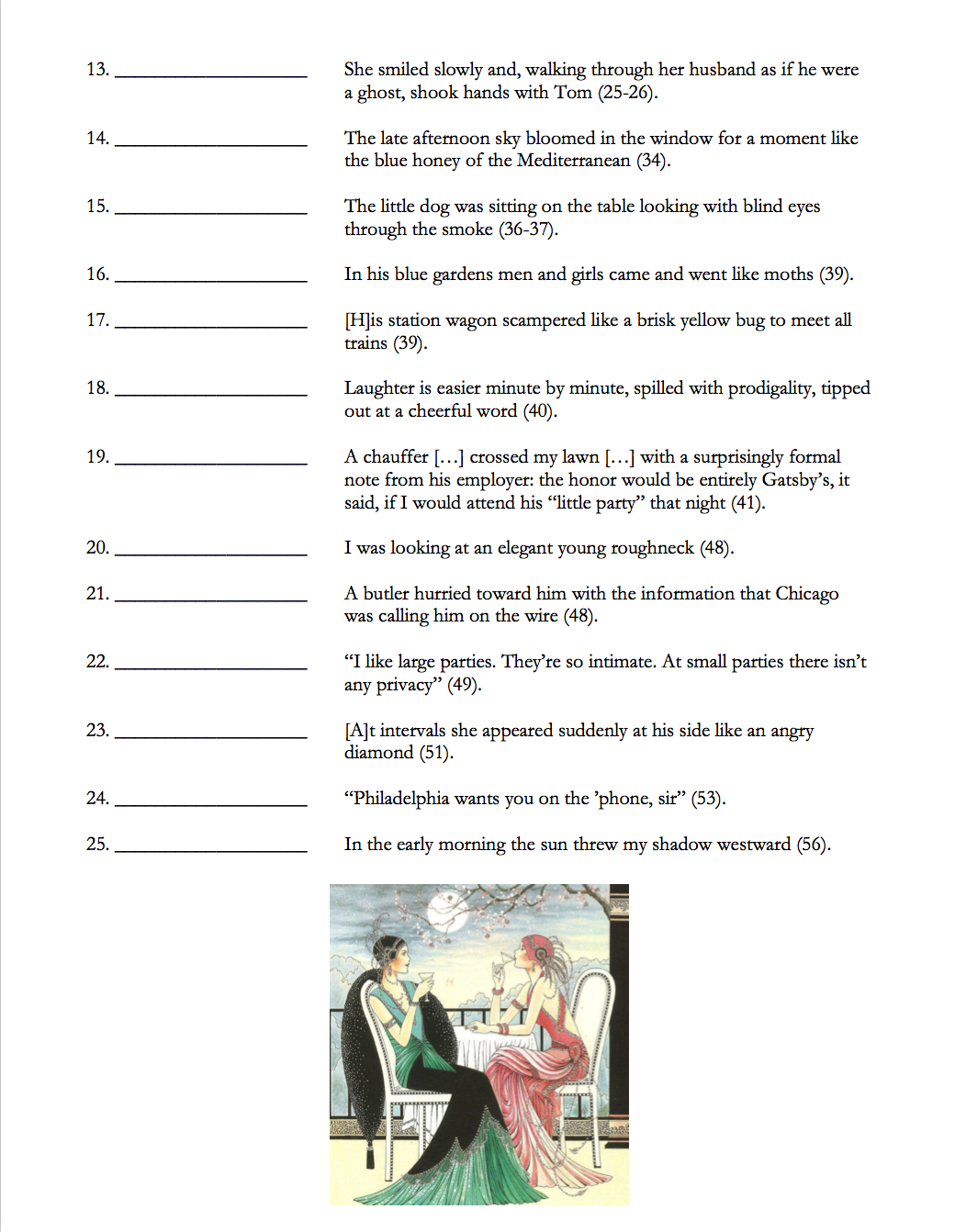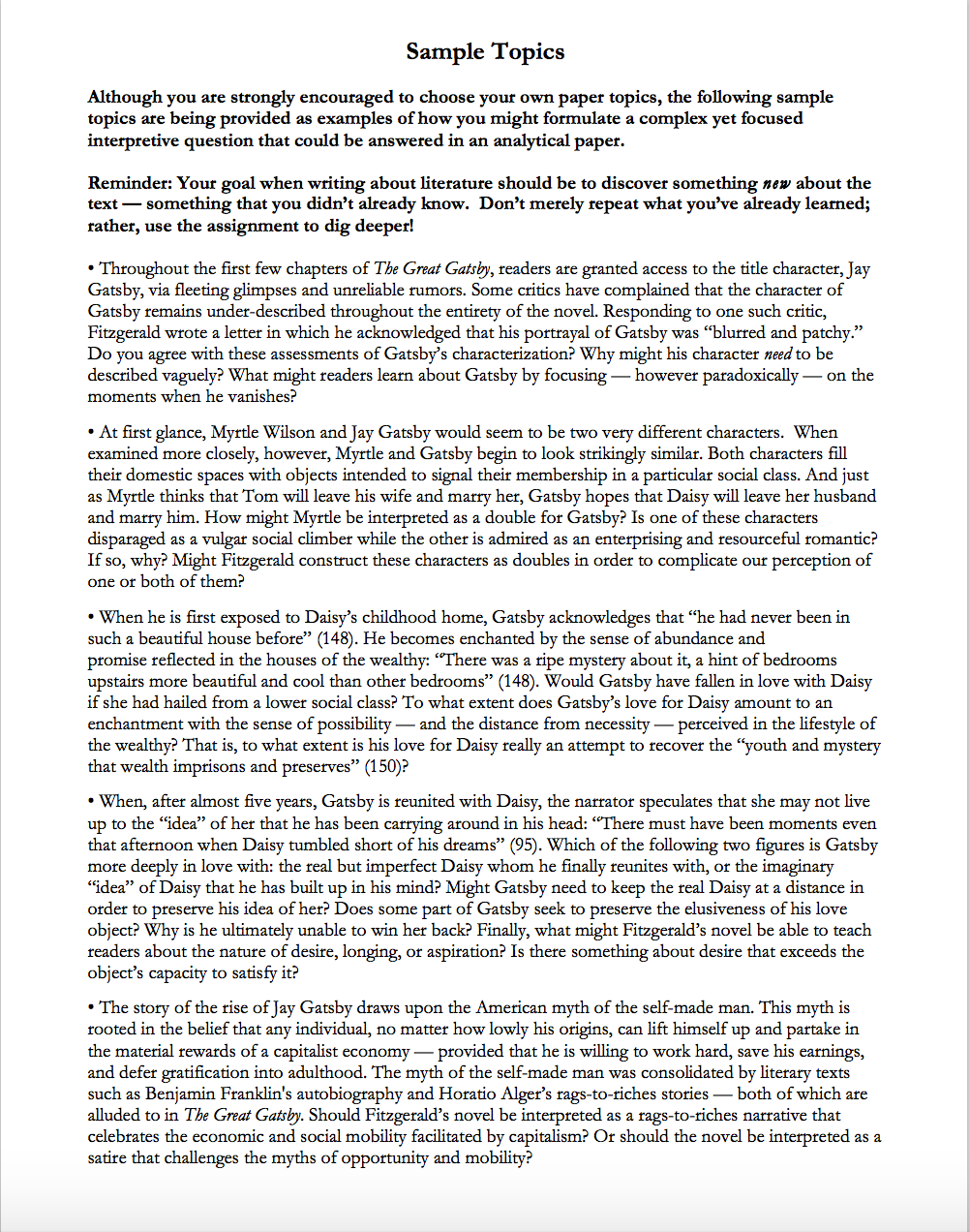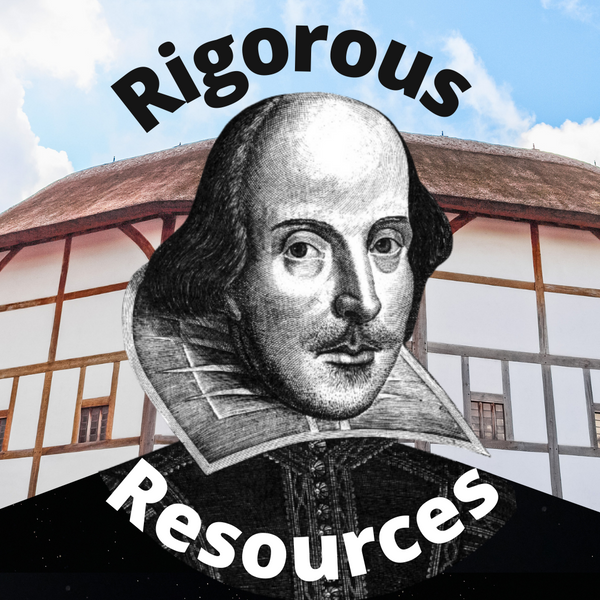Rigorous Resources
The Great Gatsby by F. Scott Fitzgerald | Complete Teaching Unit
The Great Gatsby by F. Scott Fitzgerald | Complete Teaching Unit
Couldn't load pickup availability
This 240-page MEGA-UNIT on F. Scott Fitzgerald's The Great Gatsby promises to elicit dynamic engagement from all students without compromising on intellectual rigor. The pre-reading slideshow, daily quizzes, discussion questions, close-reading exercises, creative writing assignment, and analytical writing assignment will challenge your students to dig beneath the surface of the text and generate profound interpretive insights. The unit was designed to have more than enough rigor for Honors, IB, and AP courses!
Here are some highlights from this 240-PAGE curriculum:
• Slideshow on F. Scott Fitzgerald & the “Roaring Twenties”: Introduce the novel with a slideshow about the life of F. Scott Fitzgerald and the cultural climate in which he was writing The Great Gatsby. Students learn about Fitzgerald’s humble upbringing in Minnesota, his exposure to wealthy socialites at Princeton, his courtship of a debutante named Zelda, his codification of the “flapper,” and his experiences at lavish parties in Gatsby-esque mansions on Long Island. What's more, students learn about how American life in the 1920s was radically transformed by the proliferation of automobiles (like the “death car” that kills Myrtle), billboard advertisements (like “the eyes of T. J. Eckleburg”), and electric lights (like the “green light” at the end of Daisy’s dock). And they learn about how modern life in New York City was depicted by artists like Georgia O’Keefe, Alfred Stieglitz, Joseph Stella, and others. Lecture included. (40 slides + 8 page lecture)
• Soundtrack for The Great Gatsby: A playlist on Spotify featuring the “jazz age” songs played at Gatsby's parties. Expose students to the upbeat ambiance of the Roaring Twenties by playing the songs that Fitzgerald embedded into his book. How is the novel’s content enhanced by songs like “Ain’t We Got Fun” and “The Sheik of Araby”?
• Discussion Question Handouts (x9): Over thirty pages of higher-order discussion questions guaranteed to inspire profoundly thoughtful class discussions! This unit features double-sided handouts with 8-10 discussion questions for each of 9 chapters. The discussion questions are the beating heart of these lesson plans. They challenge students to build interpretive arguments that require the support of carefully selected textual evidence — leading to keen interpretive insights! Guaranteed to foster deep thinking and dynamic discussions! (32 pages)
• Discussion Question ANSWER KEYS (x9): While every part in this unit comes with an answer key, the answer keys for the discussion questions feature an extremely high level of detail. Every answer is grounded in concrete textual evidence that gets submitted to careful analysis. The keys have been informed by the best scholarly articles and books on F. Scott Fitzgerald's The Great Gatsby. (90 pages)
• Character Analysis Worksheets (x18): Studying Fitzgerald’s nuanced construction of his characters is crucial for understanding his character-driven novel. This bundle contains 18 worksheets with carefully selected passages that challenge students to explain what textual details reveal about the main characters. Two worksheets per chapter provides choice for teachers and/or students! Builds skills in close reading! (18 pages)
• Social Class Worksheets (x3): These 3 worksheets help students not only to understand the social hierarchy and but to decode the signs of social status in The Great Gatsby. What are the differences between “West Egg” and “East Egg”? Between “New Money” and “Old Money”? These handouts demonstrate how Fitzgerald's depiction of social class was informed by his careful reading of sociologist Thorstein Veblen’s Theory of the Leisure Class (1899). Answer keys included. (5 pages)
• Color Symbolism Worksheets (x4): Each student chooses one of four colors from Fitzgerald's novel — green, yellow, white, and blue — and then explains its symbolic significance by analyzing 6-8 quotations. Students come to appreciate the dual meanings of each color: for example, while green symbolizes hope and wonder, it also represents envy. Answer keys included. (8 pages)
• Figurative Language Quizzes (x3): Each quiz challenges students to identify the types of figurative language — metaphor, simile, personification, hyperbole, paradox, etc. — used in 25 quotations from The Great Gatsby. The quizzes cover the figurative language used in chapters 1-3, chapters 4-6, and chapters 7-9 — so you can roll out each quiz after your class finishes three chapters and see whether they're improving. Also included is a glossary with definitions of the types of figurative language as well as examples of how they're used in the first chapter Fitzgerald's novel — so you can begin reviewing the types of figurative language with students before they tackle the quizzes. Answer keys included. (15 pages)
• Sound Devices Exercise: This exercise invites students to explain how Fitzgerald's use of sound devices — such as alliteration, assonance, consonance, and onomatopoeia — contributes to the novel's meaning. Also included is a glossary with definitions of these sound devices. Answer keys included. (3 pages)
• Quotation Race (x2): Students work in pairs to identify the speakers of 25 quotations. One handout features 15 quotes from the main characters, while a second handout features 10 more challenging quotes from various secondary characters. Introduce this fun activity when you need to mix things up — or to review for the AP Exam! Answer keys included. (4 pages)
• Vocabulary Lists (x9): Lists of 10-12 vocabulary words for every chapter, complete with a definition and a sample sentence with the word as used in The Great Gatsby. A total of over 100 SAT-worthy words. (9 pages)
• Vocabulary & Reading Quizzes (x9): Quizzes with 10 questions per chapter. Build students’ vocabularies while holding them accountable for the nightly reading homework. Each quiz contains 7 questions on vocabulary words plus another 3 questions on reading comprehension. Grading these quizzes is simple and quick. They’re an easy way to log up to 9 grades in your gradebook. Answer keys included. (9 pages)
• Creative Writing Assignment: Invite students to write in Fitzgerald’s virtuosic prose style while filling in a missing scene from the novel. What did Gatsby write in his letter to Daisy? What was said when Gatsby and Daisy finally reunited at Nick’s house? This assignment can be given mid-unit after students finish reading Chapter Six. Answer key included. (2 page)
• Analytical Writing Assignment: Challenge students to take their interpretations one step further by writing an analytical paper on Fitzgerald’s wonderfully complex novel. Let students choose from one of five profoundly thought-provoking sample topics — or invite them to develop an original topic of their own. Rubric included. (4 pages)
• Q3 Practice Essay: Designed for AP Lit teachers, this in-class essay assignment will enable students to practice the "Q3" essay from the AP Literature and Composition Exam. Included are three recent Q3 prompts that feature The Great Gatsby as one of the recommended works of literary merit. The assignment asks students to respond to one prompt by composing a well-written essay in 40 minutes. (5 pages)
• Poetry Pairings (x5): Wrap things up with four poems that tackle many of the themes addressed in Fitzgerald's novel: the dignity of work, the signifiers of class status, etc. A fifth poem about teenage romance features a subtle allusion to the green light from The Great Gatsby. This fifth poem is followed by a page of discussion questions as well as a 3-page teacher’s guide with detailed answers to each of the questions. I use this poem year after year to teach students how to analyze imagery — and students delight in the "a-ha" moment when they catch the allusion to the light at the end of Daisy's dock! (14 pages)
This unit is filled with dozens of visual images that shed light on important scenes from Fitzgerald’s novel: newspaper headlines, documentary photographs, paintings by modernist artists, magazine covers, portraits of Scott and Zelda. But what really distinguishes this curriculum is how the discussion questions, close-reading exercises, and writing assignments are all designed to deepen students' thinking and help them arrive at profound interpretive insights.
This unit includes 240 pages and 40 slides of content-rich lessons. The entire unit will come to you in two separate formats: Word docs *and* PDFs. Because the Word docs are fully editable, you'll be able to customize every page to suit your teaching style and/or the needs of your students — year after year! If you don't have Microsoft Word, you'll still be able to access the entire unit as PDF files, which are easy to navigate and quick to print. The pre-reading slideshow will come to you in both PowerPoint and PDF formats.
In case you'd prefer to purchase this product via the TPT website, here is a link that will take you to the product page on TPT.
I'm eager to do everything I can to help ensure that you have an amazing experience with teaching The Great Gatsby. If you have any questions along the way, please don't hesitate to get in touch via the email address below. It's always great to hear from fellow teachers who share a passion for great literature!
Happy teaching,
Adam Jernigan
adamjernigan@gmail.com
Share
